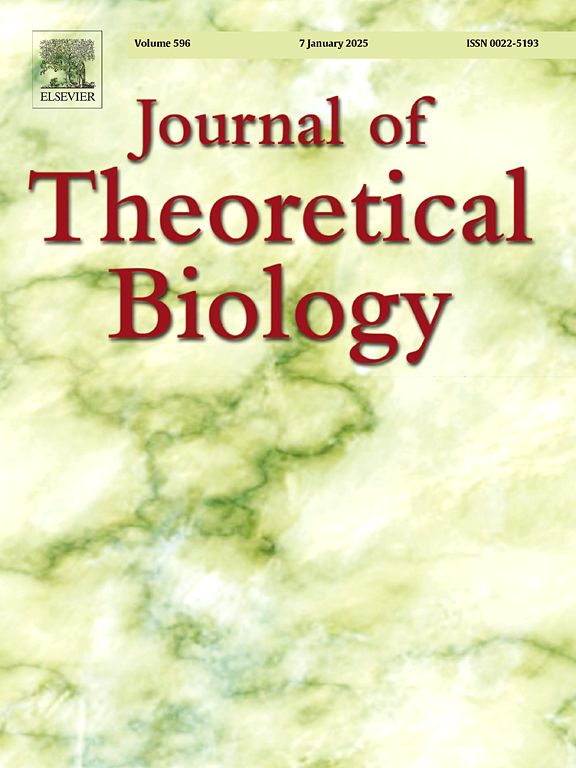脂肪酸和体力活动对β细胞质量和胰岛素敏感性至关重要:T2D的途径和预防
IF 1.9
4区 数学
Q2 BIOLOGY
引用次数: 0
摘要
现有的研究2型糖尿病(T2D)进展的数学模型主要关注葡萄糖、胰岛素、β细胞质量和其他相关因素,而经常忽略脂肪酸(FA)作为一个明确的变量,尽管FA是身体的主要能量来源。葡萄糖、胰岛素、FA和β细胞团之间存在一个复杂的动态相互作用网络。为了更深入地了解t2dm的代谢动力学和病理生理学,有必要将FA纳入此类模型。在本文中,我们扩展了经典的Topp’s GIβ模型,明确地纳入FA并探索其与葡萄糖、胰岛素和β细胞团的相互作用。我们提出了一个新的胰岛素敏感性(SI)公式,以更好地捕捉FA对SI的损害作用,从而探索糖尿病的发展途径和预防或延迟策略。模型模拟与临床数据很好地吻合,成功地复制了T2D进展的关键特征,包括SI下降、β细胞质量减少、久坐不动的生活方式和过量的饮食摄入。我们的研究结果表明葡萄糖和FA水平之间存在很强的正相关,表明FA升高与葡萄糖浓度升高有关。模型分析显示,糖尿病受试者的FA水平随着T2D的发展而显著升高。数值分析表明,保持足够的身体活动或减少饮食过量可以有效地保持SI和β细胞质量,从而降低发生T2D的风险。最值得注意的是,我们的详细模拟揭示了一个惊人的模式:在健康和非糖尿病个体中,FA水平在其一生中始终低于葡萄糖水平。相反,在T2D患者中,FA水平最初保持较低,但开始急剧增加,并与葡萄糖水平纠缠在一起,然后在β细胞衰竭时超过葡萄糖浓度。这些模式表明,升高的FA可能在增加葡萄糖水平、降低胰岛素敏感性并最终导致高血糖中发挥作用。我们的研究结果支持糖毒性和脂肪毒性加速β细胞衰退、损害胰岛素分泌和驱动t2dm进展的观点。因此,升高的FA不仅是一种促进途径,而且是监测疾病发展的潜在生物标志物。此外,观察到的葡萄糖和FA水平之间的关系似乎提示了一种定量标记物,可用于跟踪T2D的进展。本文章由计算机程序翻译,如有差异,请以英文原文为准。
Fatty acids and physical activity are critical for β-cell mass and insulin sensitivity: Pathways to T2D and prevention
Existing mathematical models investigating the progression of type 2 diabetes (T2D) over time primarily focus on glucose, insulin, -cell mass, and other related factors, while often omitting fatty acids (FA) as an explicit variable—despite FA being a major energy source for the body. There exists a complex network of dynamical interactions among glucose, insulin, FA, and -cell mass. To gain deeper insights into the metabolic dynamics and pathophysiology of T2D, it is essential to incorporate FA into such models.
In this paper, we extend the classic Topp’s model by explicitly incorporating FA and exploring its interactions with glucose, insulin, and -cell mass. A new formula for insulin sensitivity () is proposed to better capture the impaired effect of FA on , enabling the exploration of diabetes development pathways and strategies for prevention or delay. Model simulations align well with clinical data and successfully replicate key characteristics of T2D progression, including declining , reduced -cell mass, a sedentary lifestyle, and excessive dietary intake. Our results demonstrate a strong positive correlation between glucose and FA levels, indicating that elevated FA is associated with increased glucose concentrations. Model analysis shows that FA levels in diabetic subjects rise significantly as a result of T2D development. Numerical analyses indicate that maintaining adequate physical activity or reducing dietary excess effectively preserves and -cell mass, thereby reducing the risk of developing T2D.
Most notably, our detailed simulations reveal a striking pattern: in healthy and non-diabetic individuals, FA levels consistently remain below glucose levels across their lifespan. In contrast, in individuals with T2D, FA levels initially remain lower but begin to increase sharply and tangle with glucose levels, and then surpass glucose concentrations near the time of -cell failure. These patterns suggest that elevated FA may play a contributory role in increasing glucose levels, reducing insulin sensitivity, and ultimately leading to hyperglycemia. Our findings support the notion that glucotoxicity and lipotoxicity accelerate -cell decline, impair insulin secretion, and drive T2D progression. Elevated FA thus emerges not only as a contributing pathway but also as a potential biomarker for monitoring disease development. Furthermore, the observed relationship between glucose and FA levels seems suggesting a quantitative marker that could be used to track progression toward T2D.
求助全文
通过发布文献求助,成功后即可免费获取论文全文。
去求助
来源期刊
CiteScore
4.20
自引率
5.00%
发文量
218
审稿时长
51 days
期刊介绍:
The Journal of Theoretical Biology is the leading forum for theoretical perspectives that give insight into biological processes. It covers a very wide range of topics and is of interest to biologists in many areas of research, including:
• Brain and Neuroscience
• Cancer Growth and Treatment
• Cell Biology
• Developmental Biology
• Ecology
• Evolution
• Immunology,
• Infectious and non-infectious Diseases,
• Mathematical, Computational, Biophysical and Statistical Modeling
• Microbiology, Molecular Biology, and Biochemistry
• Networks and Complex Systems
• Physiology
• Pharmacodynamics
• Animal Behavior and Game Theory
Acceptable papers are those that bear significant importance on the biology per se being presented, and not on the mathematical analysis. Papers that include some data or experimental material bearing on theory will be considered, including those that contain comparative study, statistical data analysis, mathematical proof, computer simulations, experiments, field observations, or even philosophical arguments, which are all methods to support or reject theoretical ideas. However, there should be a concerted effort to make papers intelligible to biologists in the chosen field.

 求助内容:
求助内容: 应助结果提醒方式:
应助结果提醒方式:


